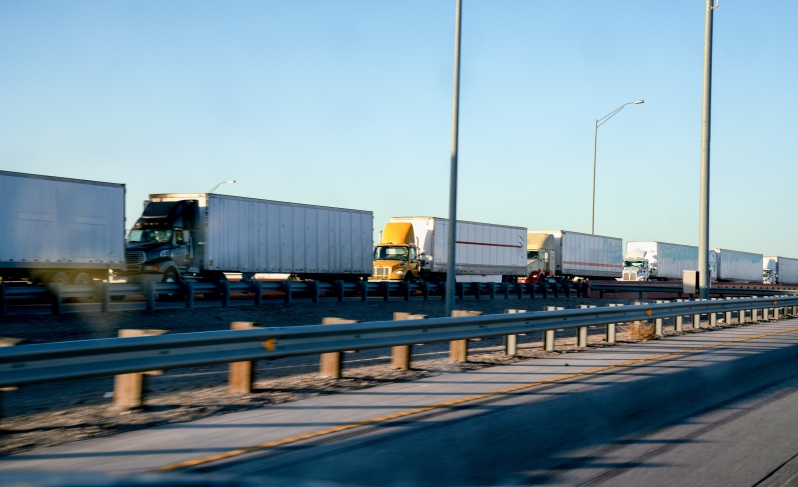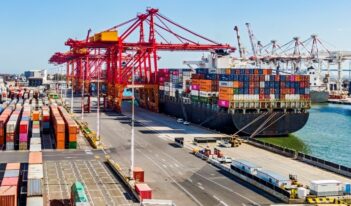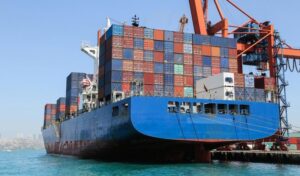
A novel trade enforcement tool creates an expedited process to protect labor rights.
Labor rights have not often been at the forefront of America’s international trade policy. In recent years, bipartisan policymakers have criticized past trade deals, such as the North American Free Trade Agreement (NAFTA), for harming U.S. workers, leading to job losses, and undermining the middle class. A particular cause for concern has been the difficulty in enforcing provisions designed to guarantee workers’ rights abroad. Without adequate protections, businesses that violate workers’ rights can gain a trade advantage.
When the United States was negotiating the terms of the United States-Mexico-Canada Agreement (USMCA), the new trade pact replacing NAFTA, congressional Democrats and major U.S. labor organizations successfully pushed for the bipartisan agreement to include a novel trade enforcement tool to combat violations of labor rights—the facility-specific rapid response labor mechanism (RRLM). The RRLM provides an expedited dispute resolution mechanism between the United States and Mexico to address labor rights violations at specific production facilities, which can ultimately result in trade penalties being imposed on the goods produced at the violating facility.
The RRLM is now being put to use. On July 8, 2021, the United States and Mexico announced a first-of-its-kind agreement under this new enforcement mechanism to address a denial of workers’ rights at a General Motors (GM) plant in Silao, Mexico. Although it is too early to say how effective this tool will prove in the long run, its development and initial use is a welcome sign that effective protection of workers’ rights is becoming a larger priority in trade policy.
The GM case stemmed from a union election in April 2021 at the company’s plant in Silao that was reportedly prematurely ended “after Mexican officials detected ‘serious irregularities’ including destroyed ballots.”
A few weeks later, the United States Trade Representative (USTR), Ambassador Katherine Tai, asked Mexico to review whether workers at the plant were “being denied the right of free association and collective bargaining,” invoking for the first time the facility-specific RRLM under the USMCA.
The first step in the RRLM process is for the complainant to request a review of the situation and, if applicable, for the respondent to try to agree with the complainant on a course of remediation. Accordingly, after the United States requested a review from Mexico, the Mexican authorities conducted the review and began discussions with U.S. authorities to create a remediation plan. Ambassador Tai commended Mexican officials “for taking swift action when they recognized that workers’ rights were denied.”
The remediation agreement announced on July 8 called for a new union vote to be held at the GM facility by August 20 and provided for Mexican federal inspectors and international observers to be present at the facility ahead of the vote. The new vote went forward as planned, with workers choosing to reject their existing collective bargaining agreement.
In a press release following the vote, Ambassador Tai declared that “The vote results announced today are another important demonstration of the role of the USMCA’s rapid response mechanism in getting prompt and meaningful results for workers.” Tai also congratulated the Mexican government for overseeing the vote and thanked international and local organizations for their assistance as observers.
In this case, the United States and Mexico appear to have readily reached an agreement on an appropriate course of remediation. In the event of disagreements as to whether a denial of workers’ rights has occurred or how to remediate, the RRLM provides for the establishment of a dispute resolution panel—the rapid response labor panel.
The RRLM applies more broadly to Mexican production facilities than it does to facilities in the United States because the RRLM in the USMCA does not apply to U.S. facilities unless they are “under an enforced order of the National Labor Relations Board,” the independent U.S. agency charged with ensuring fair labor practices.
The debut of the RRLM illustrates its appeal, especially in terms of its speed. The tool has so far shown that it can indeed deliver a “rapid” response to a denial of rights. Of course, this is only a single case, and, even in this case, additional steps still remain ahead for the plant’s workers as they seek an improved agreement.
Given what appears to be a positive result so far, however, additional RRLM cases are likely. A second RRLM case also signals the tool’s potential. Days before USTR filed its RRLM request with Mexico in the GM case, several labor organizations filed a petition with the U.S. government seeking to invoke the RRLM in a separate case against a Mexican auto parts factory. In response to that petition, on June 9, USTR submitted a request to Mexico to review that case under the RRLM.
On August 10, roughly two months after that request, USTR announced a settlement with the auto parts company entailing labor rights commitments and the payment of severance and backpay to certain affected workers. USTR described the agreement as “the second time USTR successfully used the United States-Mexico-Canada Agreement’s (USMCA) Rapid Response Labor Mechanism … to benefit workers,” and the first in response to an RRLM petition.
Future cases and developments remain very important for evaluating the RRLM. For example, because these first two cases were readily resolved by agreement, the full dispute resolution provisions of the RRLM have not yet been tested.
A potential ramification of the use of the RRLM is that the U.S. Congress may adopt the tool in future trade deals. When Congress incorporated the provision into the USCMA, Senator Sherrod Brown (D-Ohio)—a principal proponent of the provision, along with Senator Ron Wyden (D-Ore.)—called for its inclusion in “every trade agreement going forward.”
If the RRLM catches on as an effective trade dispute resolution tool for labor issues, it is also possible that it could spread beyond the confines of labor rights to other areas, such as the environmental protection provisions of trade agreements. As with factories that violate labor laws, those businesses that break environmental laws could also theoretically be targeted with facility-specific trade penalties in situations where there is a failure to remediate violations.
The RRLM is only one aspect of the USMCA’s labor provisions, and it remains to be seen whether the USMCA will, on balance, benefit workers. The early use of the RRLM, however, shows promise.
This essay is written in the author’s personal capacity, and the views expressed are his own and not necessarily those of the Commission or any individual Commissioner.




